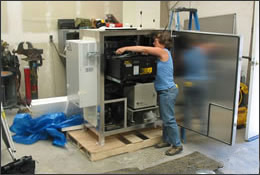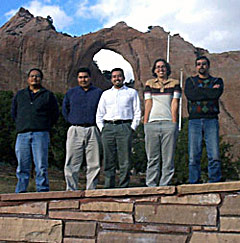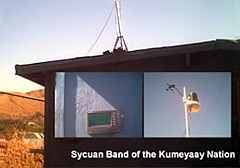Pacific Southwest, Region 9
Serving: Arizona, California, Hawaii, Nevada, Pacific Islands, 148 Tribes
Successes in 2004: EPA and Tribal Environmental Results
Note: EPA no longer updates this information, but it may be useful as a reference or resource.
Clean Air

Many tribes in the Pacific Southwest still face significant air pollution challenges. Forty-eight out of 146 tribes, or nearly one-third, are in areas that do not meet the EPA 8-hour ozone standard. Twenty eight of these tribes are also located in areas designated by EPA as not meeting the fine particulate standard. Many air quality problems are caused by pollution transport from other areas.
Nevertheless, tribes are taking the lead to understand and improve their air quality. For example, twenty tribes operated air monitors at 32 sites in 2004.

On October 15, 2004, EPA delegated authority to administer the federal Title V (industrial) air emission permits program to the Navajo Nation – the nation’s first tribal government to gain such authority. Under an agreement between EPA and the Navajo Nation EPA, the Tribe will take over Title V permitting responsibilities for twelve existing major stationary air pollution sources on the reservation. EPA determined that the Navajo Nation meets the eligibility requirements for treatment in the same manner as a state. The permit fees collected by the Tribe will help them to ramp-up the staff and resources for Title V activities, an important step toward establishing a comprehensive air quality control program. This delegation of authority from EPA to the Navajo Nation will improve responsiveness to the public and regulated communities.

The Phoenix Joint Air Toxics Assessment Project demonstrated groundbreaking cooperation between Tribal and state air pollution control agencies. In this photo, the Gila River Indian Community air quality staff stand in front of one of their monitoring sites. This site (St. John's, AZ) is located next to a school where the program does outreach and training for students. It has PM-10, ozone and air toxics monitoring equipment. The air toxics monitor is part of the Joint Air Toxics Assessment Project.

In 2004, the Sycuan Band of the Kumeyaay Nation installed a new weather station and conducted a first round of passive ozone sampling. Sycuan’s new weather station collects data that is used in an Environmental Health Advisory Newsletter for Tribal Members.
Air 2005 Goals
Assist tribes in assessing the quality of their air and building the capacity to participate in decisions that affect their air.
- 29 tribes will receive federal support for air programs.
- 20 tribes will monitor air quality (48 monitors).
| Pacific Southwest NewsroomPacific Southwest Programs | Grants & FundingUS-Mexico Border | Media Center Careers | About EPA Region 9 (Pacific Southwest)A-Z Index |
